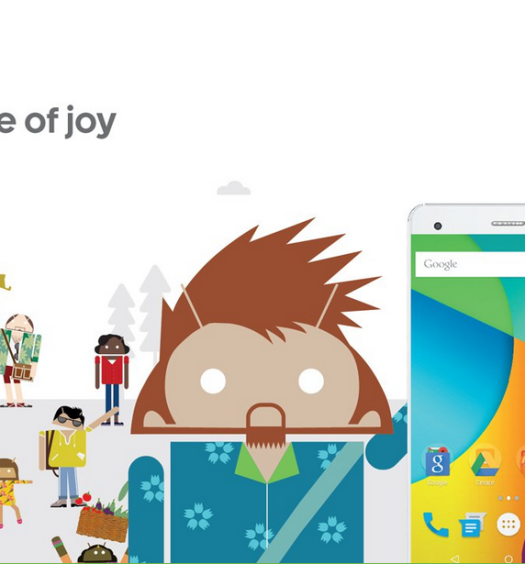The business and marketing of online matrimony and dating services in India
Introduction to the business of Indian matrimony
Matrimonial websites have been in India for more than 15 years now. The business case is extremely strong for matrimonial business to run especially because of the ever so prevalent system of arranged marriages in India. The matchmaking has been a part of the Indian marriage scene since forever. However, as time passed the baton to fix marriages has changed hands from close and distant relatives to agents and brokers to astrologers and pundits to newspaper classifieds and finally matrimonial websites now. There cannot be a better case to build and organize an unorganized segment in India which was the proof of concept for matrimonial websites which set shop and took advantage of this.
Since then the traditional business of marriage has been under serious threat with the rise of websites like Shaadi.com, Jeevansathi.com, BharatMatrimony.com and others. So much so that it is now predicted that the online marriage business will be worth Rs.1500 crore by 2017. Source
This space is ever so active and now going to explode with Bharat Matrimony, the leader in online matrimonial business has filed for an IPO with SEBI looking for a valuation of more than Rs. 2500 crore. Source
The business strategy of Bharat Matrimony
One of the first movers in this category and the market leader now realized the trick to game the entire online match-making business. The management at BharatMatrimony.com knew that the product for online matchmaking cannot be “one size fits all”. Arranged marriages had multiple restrictions and one of the most basic restrictions would be to find a partner in one’s own community. What started off as a simple matrimony website has now become a collection of more than 325 community matrimonial websites.
Check out the entire list here and be amazed
There were various other requests and business models that came with the restrictions. There were users who never wished to be identified or found on the websites. There were users who were looking for a second marriage. There were users who only wanted to get married in families that matched their financial background. Then there were those who were not even comfortable with going online but still wanted to use the service. Offline matchmaking centers, services, customized packages, and premium offerings came into existence for these users to make Bharat Matrimony clock close to Rs. 200 crore in revenues before they turned cash profit in 2009.
The marketing strategy of online matrimony and dating services
If you see closely when it comes to the communication strategy of online matrimony services, almost all of them have followed a similar trend. It has always been about the girl. Almost all the TV ads will always have the girl either as the protagonist or the subject.
What could be the possible reasons?
Gender balance
According to an IAMAI report, women will constitute only 33% of the overall internet population by 2018 which is expected to be around 550 million internet users. Source This number is obviously representative of the 2011 population census which stated that there are around 940 females for every 1000 males in the country.
Historically, if you notice the early days of online chatting and social networking websites a simple observation will tell you how these were readily adopted by males before anyone else. The whole issue of safety and privacy came into existence slowly when females started adopting this platform and wanted to keep their world private on a public domain. Orkut was one of the first websites which faced this backlash which was also one of the many reasons that led to its demise.
A platform that gets both males and females on a single platform to interact will always be readily adopted by males in the country due to skewed sex ratio and on top of that the horribly skewed gender balance of the internet population in India.
Societal Norms
A lot of urban India might have evolved in the ways they want to treat their daughters and their opinion on love and arranged marriage. However, there still remains a huge population out there that considers the daughter’s wedding a more sensitive issue and a task that needs to be completed. In fact even when you see educated youth talking about marriage it is always that for a girl the right age to get married is a couple of years before the guy. The conversation will always be “You’re a guy, you still have time. For a girl, I am already past the ideal marriage age according to my parents”.
The very fear about the girl not finding the right guy is played on the parent’s mind.
Business Reasons
According to Esha Arora, AVP Marketing, Jeevansathi.com, the communication is more skewed towards the girl and her parents because it just makes business sense. She says that girl profiles are always more serious in the way they use the service as females tend to pay up more than males on the websites primarily because of seriousness and urgency.
Parents might be the real users
Another angle to look at this might be when it comes to online matrimony websites, parents, in fact, are the real users. It makes complete sense for the marketers to reach out to parents and assure them through their communication that this is a completely safe and best way to possibly find a groom for your daughter. This is because youth and I speak for myself too is not too keen to go on and list themselves on such websites. They find it embarrassing and thus leave it to their parents to do this job. If the marketers, through their communication, manage to strike a chord with the dad they might have hit gold.
Case in Point
Let’s look at some of the ads of popular online matrimony websites to see the thought process behind them and if there needs to be a shift in communication.
JEEVANSATHI
https://www.youtube.com/watch?v=vNATflnUC88
The ad has run and successfully so for the more than 5 years on TV and online. The communication here stresses the point that a father is harrowed to find the perfect groom for his daughter and that is all there on his mind. This ad targets the troubled fathers and their fears to find a suitable groom for their daughters.
SELECT SHAADI BY SHAADI.COM
https://www.youtube.com/watch?v=SPkXJitE7sQ
As time changed, the roles of father and their relationship with their daughters changed too. Take for example the above commercial which speaks about an independent girl not too dependent on her father yet wants them to be involved in this very important decision and still wants the freedom of choice. The father too is someone who believes that this matter should be handled with patience and understanding. A TVC targeted completely towards SEC A audience living in the metros. However still no sign of the boy.
BHARAT MATRIMONY
The central theme of Bharat Matrimony ads have almost remained the same however, the guy has always been an enable to the girl’s wishes and wants. These ads were more targeted towards a girl’s fear of getting into an arranged marriage and more so through an online matrimony website.
https://www.youtube.com/watch?v=fjGlT5KhTTk
The guy in these ads has always been progressive highlighting the similar interest match-making positioning of Bharat Matrimony. This particular ad goes slightly off track in being a tad bit sexist where the girl is actually mentioning “I want to work after marriage” massaging the male ego of letting them work as if they have the right instead of typing “I WILL work after marriage”.
View other examples that followed this ad.
https://www.youtube.com/watch?v=XNssBjL7AGE
https://www.youtube.com/watch?v=A_gawhhwnYQ
Still no mention of what the guy wants?
Times are changing – From online matrimony websites to dating apps?
With Tinder we saw a whole new world of blind dating being exposed to millions of mobile internet users in India. The likes of Tinder, Woo, Truly Madly and other dating websites pose a possible threat to the organized arranged marriage business in India. These apps are a lot cooler, enable the user directly and not involving the family and gives the freedom to accept or reject without complications. They are in the truest sense empowering and fun and so is their communication.
But wait a minute, even here the communication is all about what the girl wants.
TRULY MADLY
Truly Madly, a relatively new dating app specific to India has come up with 2 campaigns, #BoyBrowsing and #ManParade both speaking of the plethora of options that girls have at their disposal. This again is a function of the mindset that if there are enough females users, guys will follow on their own.
https://www.youtube.com/watch?v=oLrHtjwxQQo
https://www.youtube.com/watch?v=0Xjy3jFFcNY
SHAADI.COM
In a bold move by Shaadi.com, it has moved from its positioning “Love, Arranged by Shaadi.com” to “#MyConditionsApply”. In this beautifully shot and perfectly executed TVC it talks about how girls would not want to change in a relationship. Now what Shaadi is doing is trying to find a midway between an uncool matrimony service and a cool dating app. In this middle path that it has taken the risk is to allienate its core users and fail to attract new ones.
Would an otherwise online matrimony hating user go on the Shaadi app because of this ad and will a father looking for a groom for her daughter register on Shaadi because of this? We can only wait. Having said that even here the girl is specifying her conditions and the guy is nowhere to be seen or heard yet again.
https://www.youtube.com/watch?v=YmaJaw4yCzk
What do we know? What have we learned?
It’s true that the matrimony marketing follows a certain myopic and stereotypical view when it comes to marketing and communication however that is just a representation of the existing fears, patterns that exist with their users.
A lot of new services will challenge matrimony websites both in terms of business and marketing and only time will tell on how both things change in the 2020 internet context.
In all of this one thing has always remained constant, the guy is missing in the equation but does it really matter?




September 28, 2015
I think its a smart move to show girls as the decision maker in the shaadi ad film. For the primary reason that of the internet population, it is this age group that would be the majority; would have the financial means and are strongly moving to become decision makers.
Also, it always is a good strategy to make the protagonist aspirational. This way, the brand caters both to power users, the independent kinds and also to the ones who aren’t there but secretly wish to be super-women. And when they become one, the brand was always talking to them.
Take Nike for example, the brand always talks about guys who, when wearing Nike, achieve inspirational athleticism. Now, the age group and behavior is aspirational for both younger and older generation, compared to the one shown in ads. And they feel, if they wear a Nike, they can mimic the protagonist. As such, all generations wear Nike; or would like to wear one.